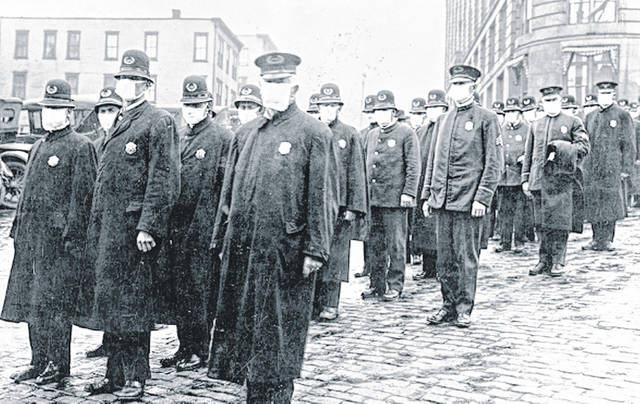
In 1918, a raging influenza pandemic had grasped the nation. Around the country, organizations urged citizens to wear protective masks, open windows and doors, and stay home when possible. Sound familiar? Americans in 2020 are dealing with the same challenges from more than 100 years ago.
Just like mask mandates for COVID-19, protective measures had to be taken in 1918 in most American cities to prevent further spread of the virus. According to the one Cincinnati doctor, “Army doctors have found the ‘gauze face mask’ very useful in preventing infection.”
Although not as wide spread as the 2020 COVID-19 pandemic, masks in 1918 were still an important part of the public health’s response to influenza. Public spitting in streets was also outlawed in some states. Other practices included the closing of businesses, especially those that involved high contact between customers and owners.
Mask mandates were set in place around the country, some more strongly enforced than others. In San Francisco, a fine of $5 was charged to non-compliant citizens and violators were charged with disturbing the peace. The same fine today would be equivalent to more than 85 dollars. This San Francisco law eventually led to the creation of the Anti-Mask League, a group of angry business owners and citizens uncomfortable with the city ordinances.
To most citizens, wearing a mask was an act of patriotism. With so many soldiers having just returned from World War I, the Red Cross and government officials framed mask wearing as a way to protect troops from the viral attack. A sense of duty accompanied every citizen who wore a mask. As one Red Cross public service announcement said, “Every man, woman, or child who does not wear a mask is a dangerous slacker.”
Not everyone wore his or her masks for the right reasons. Upper class ladies used sheer, mesh masks as fashion accessories to flaunt their wealth and style. The material of the masks was hardly effective in preventing disease, but this way they would not be fined for failure to wear a mask. Other people poked holes in their masks so they could smoke. The effectiveness of masks was both under-researched and under-reported in 1918. The public’s knowledge of the virus and its transmission methods was lacking, resulting in a higher spread of influenza.
Over a century ago, the 1918 pandemic, what some called the “The Spanish Flu” and others “The Grip” changed the face of modern medicine forever. In Highland County, the disease some notable parallels to the current pandemic in 2020.
The first instance of the flu in Ohio likely came from soldiers coming back from the war. The men happily returned from Europe, bringing with them the deadly virus to their wives and children back in America. The result was a massive pandemic even reaching to Highland County, where overwhelmed citizens panicked as their friends and family became ill.
There were numerous waves to the 1918 H1N1 pandemic. The first was very mild and resulted in very few deaths. The second wave, however, had symptoms that were actually very similar to COVID-19. Coughing, fever, and occasionally gastrointestinal disturbances were observed. The second wave of influenza targeted healthy, younger adults, turning the skin blue and filling their lungs with fluid until they died only hours or days after showing symptoms. In just one year, the U.S. life expectancy plunged a dozen years.
In the end, the pandemic lasted more than two years, the worst of it coming in the fall of 1918. By the end of 1920, the flu had infected more than 500 million people, about one-third of the world’s population. The impact of the virus can still be seen today in the health care advances brought on by the tragedy. Today we can look back at the 1918 pandemic and learn some important lessons for facing COVID-19.
Sources: https://www.history.com/news/1918-spanish-flu-mask-wearing-resistance and https://www.cdc.gov/flu/pandemic-resources/1918-commemoration/historical-images.htm.


